Brits are being advised to pick up dead birds — despite the world being gripped by the worst ever avian influenza outbreak which scientists fear could unleash another devastating pandemic.
The Department for Environment Food and Rural Affairs (Defra) urges the public to inform it of any dead wild birds so it can collect and test them.
This surveillance system allows officials to keep close tabs on the outbreak, which experts think might have already mutated to spread between mammals.
However, Brits have told MailOnline that call handlers at the ‘overwhelmed’ service are advising them to put carcasses into the bin themselves without recommending any PPE.
This is despite health bosses advising people not to touch dead birds, in case they are infected with H5N1 — the strain sparking concern across the world.
While not all carcasses will be victims of bird flu, experts told this website they were surprised by the advice because of them being a ‘possible source of contamination’.
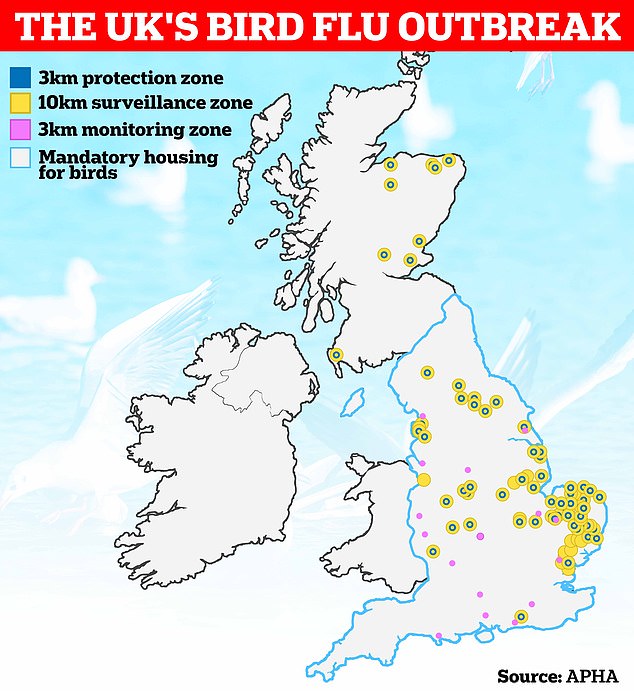
Nearly 300 confirmed cases of H5N1 have been detected among birds in England since the current outbreak began in October 2021. However, the true toll is thought to be much higher. The map shows the areas where cases have been detected and where 3km (blue dots) and 10km (yellow dots) protection zones have been imposed — meaning enhanced infection control measures are in place among those who have birds
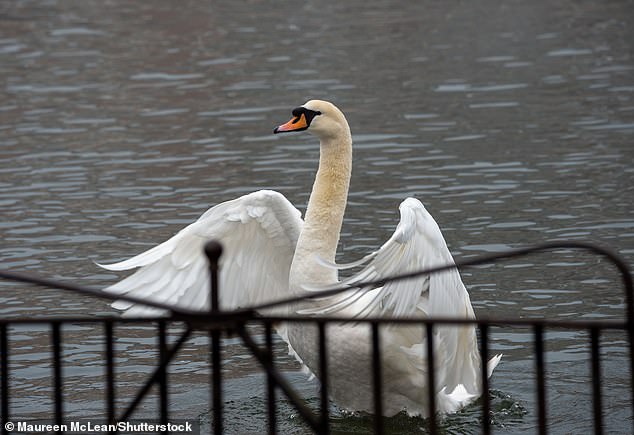
Brits have told MailOnline that Defra call handlers at the ‘overwhelmed’ service are advising them to put carcasses into the bin themselves without recommending any PPE. Pictured: A swan on the River Thames in Windsor, Berkshire
Wendy Hermon, operations director at the charity Swan Support, which rescues and treats sick and injured swans, called Defra in December to inform it of two dead birds in the Thames Valley.
She ‘highly suspected’ they had bird flu.
Yet Defra officials, Ms Hermon claimed, told her to ‘dispose of them in a bin’ if they were not collected within 48 hours ‘as they were so busy’.
Other Brits have had similar experiences, according to Ms Hermon.
One person in Berkshire was told to dispose of a dead goose in a bin.
Ms Hermon said: ‘There was also many posts on Facebook stating that the advice from Defra was to dispose of [dead birds] in bins as they were overwhelmed with calls.
‘At no time was PPE mentioned.’
She told Defra of her concerns about the advice in early November but ‘to no avail’.
Jenny l’Anson, from South Leicestershire, posted on Facebook last month that Defra call handlers told her to put on rubber gloves and double bag a dead bird she found and bin it.
In another post, Eric Goodyer, from London, said in October that Defra told him to ‘dump’ a dead greylag goose he found, and suspected had bird flu, in his rubbish bin.
Advice on Defra’s website instructs Brits to ‘not touch dead wild birds’.
However, it says that people can dispose of a small number of dead garden and wild birds found on their own premises in their household bin, while wearing gloves and double-bagging the carcasses, as these are thought to be at low risk of bird flu.
It asks the public to inform Defra if they find one or more birds of prey, gulls, swans, geese or ducks in the same place.
Five or more dead wild birds of any type in the same location should also be logged.
Defra teams may then collect and test them to monitor the spread of avian influenza.
However, it will not gather the animals if some in the same area have recently been tested, or if the bird is in water and collectors cannot reach it.
Brits are told to contact their local authority if they want dead birds removed from public land.
Defra notes that not all dead wild birds have been infected with bird flu.
But it tells Brits to wash their hands thoroughly if they touch them, their droppings or feathers.
Professor Paul Wigley, an avian infection and immunity expert at the University of Liverpool, told MailOnline: ‘I’m slightly surprised by [Defra’s advice].
‘Though the risk of handling an individual dead bird is extremely low (with strict hand washing), normally you would expect disposal to [be] through the stricter hazardous waste route as it’s a bit like kicking the can down the road.’
While bird flu doesn’t easily spread to humans, it can be transmitted by touching an infected bird, regardless of whether it is dead or alive, as birds shed the virus through their saliva, mucous and faeces.
And around half of infections in people are fatal.
Professor Ian Jones, a virologist at the University of Reading, told MailOnline: ‘It would be very ill advice to handle infected birds’ carcasses.
‘This is certainly a possible source of contamination.
‘In birds, the virus is shed in the faeces, so contamination of the carcass is a real possibility.
‘If avian flu is suspected the carcass should not be handled directly.
‘At the very least gloves should be worn, and preferably some form of implement used, to move the carcass to a bag for disposal, preferably by incineration.’
The UK Health Security Agency says it is ‘important that people do not touch dead or sick birds’.
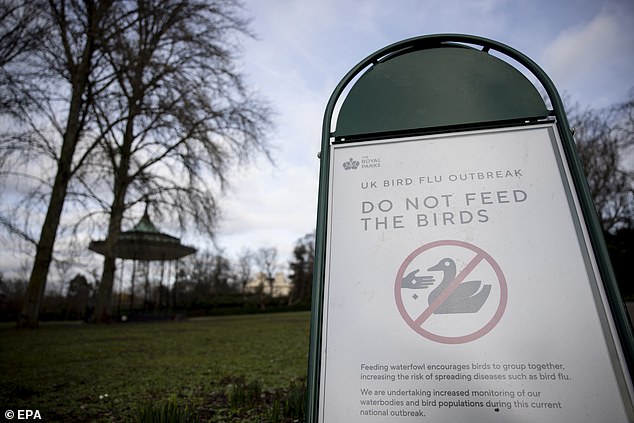
Pictured: A notice board warns people against feeding the birds in Regent’s Park in London due to rise in bird flu
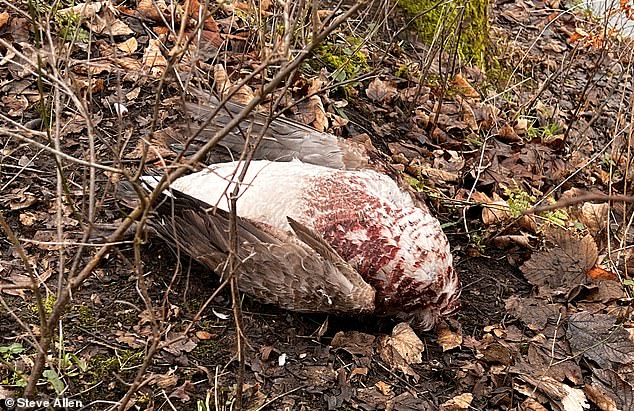
Pictured: A dead bird in Queens Park in Heywood, Rochdale, amid the bird flu outbreak
The RSPCA advises people not to ‘approach or handle’ birds that are suspected to have avian flu.
It issued a reminder last year not to ‘touch or pick up and dead or visibly sick birds’ amid the ‘worryingly widespread’ outbreak of H5N1.
However, Dr Alastair Ward, an expert in biodiversity and ecosystem management at the University of Leeds, said Defra’s advice ‘seems to be about risk minimisation’.
He said: ‘Generally speaking, most people will keep the risk of coming into potentially infectious contact with avian flu very low to nil if they avoid all contact with wild birds.
‘However, there may be some circumstances where wild bird carcasses pose a greater risk or cause some other problem, and so risks can be reduced by disposing of them.
‘Risks to people disposing of dead birds can be substantially reduced with good hygiene.’
A spokesperson for the Animal and Plant Health Agency, which sits within Defra, said: ‘We are clear that members of the public should not touch dead wild birds, as set out in our guidance published on gov.uk.
‘Members of the public should use the online reporting system or call the Defra helpline if they find one or more dead wild bird of prey, gull, swan, goose or duck or five or more dead wild birds of any species.
‘Local authorities are responsible for the disposal of dead birds on public land.’
There have been 280 cases of the H5N1 bird flu strain in the UK since the outbreak started in October 2021.
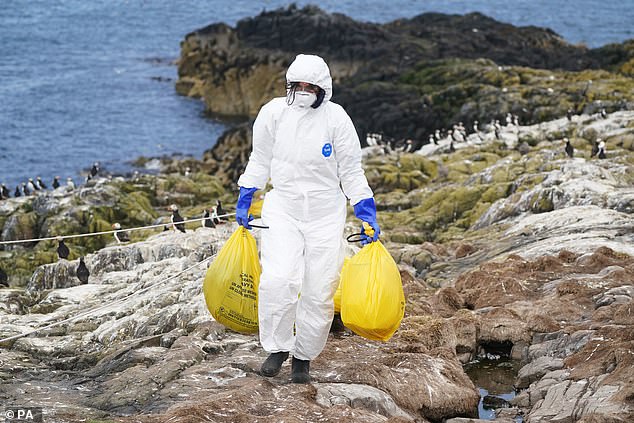
Pictured: A National Trust ranger clears deceased birds from Staple Island in July 2022
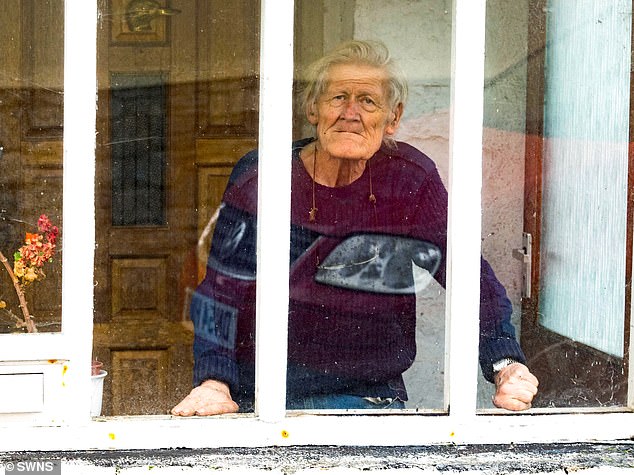
Alan Gosling (pictured), a retired engineer in Devon, caught the virus after his ducks, some of which lived inside his home, became infected. No one else caught the virus
This sparked concern that the virus may be spreading between the mammals, which would indicate it had picked up a troublesome mutation that could, in theory, make it easier for humans to become infected.
However, the true toll is thought to be much higher because the vast majority of dead birds are not tested.
The current high level of cases is unusual because the virus usually dies out over the summer.
There has also been cases among foxes and otters, which are believed to have become infected after eating dead birds who had avian flu.
Further testing is still required to determine if mammals are transmitting the virus, however.
For decades, scientists have warned that bird flu is the most likely contender for triggering the next pandemic.
Experts say this is because of the threat of recombination — with high levels of human flu raising the risk of a human becoming co-infected with avian flu as well.
This could see a deadly strain of bird flu merge with a transmissible seasonal flu.
But there has only been one case of a British person becoming infected since the current outbreak began.
Alan Gosling, a retired engineer in Devon, caught the virus in early 2022 after his ducks, some of which lived inside his home, became infected.












